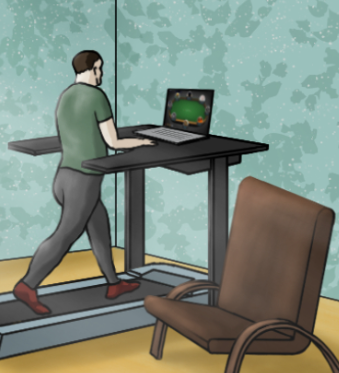Poker Game Modes
Poker offers a wide variety of game formats, from traditional cash games to large-scale multi-table tournaments, from fixed-limit games to dynamic all-or-nothing modes. Understanding the key differences between them is an important step in developing an effective strategy and an optimal training regimen.
- Cash Games (Ring Games)

In cash game mode, you simply sit down at a table, buy-in from the minimum to the maximum, play as long as you want, and can leave whenever you want, preferably in the big blinds.
Flexibility and convenience – enter and exit at any time.
You can play multiple hands and multiple tables, eliminate mistakes, and work on volume.
The stack remains the same, you can always rebuy to the maximum, there are no blind increases, and you don’t have to worry about busting. With long stacks (for example, 100bb or more, up to 200bb), you can maneuver more and wait for favorable situations.
Strict bankroll discipline is required, as the variance can be significant.
It’s very suitable for training: you can test different ranges, playing styles, and apply GTO approaches.
- Tournaments
Tournaments have a fixed buy-in, the same starting stack for everyone, and blinds/ant increases as the game progresses. The winner is the one who collects all the chips or wins the prize structure.
Main types:
STT (Single-Table Tournament, SNG) — a tournament at one table (usually 6-10 players), the start begins as soon as the seats are filled.
MTT (Multi-Table Tournament) — multiple tables, players from different tables combine for the final phase.
Turbo and hyper-turbo modes are accelerated tournaments where blinds increase very quickly.
Strategy requires:
Adaptability: the early phase is a breather, the middle phase is an attack, and the final phase is risk-taking and ICM (Index of Chip Value) considerations.
Stack and blind changes are taken into account: a stack in a tournament loses relative value as the blinds increase.
Emotional control: tournament sessions are often long, and the risk of elimination is high.
- Special Formats
There are interesting and less common formats:
Heads-up – heads-up play.
Mixed Games / 8-Game / H.O.R.S.E. formats – players alternate between several poker types. Example: H.O.R.S.E. format (Hold’em, Omaha Hi/Lo, Razz, Seven-Card Stud, Stud Hi/Lo).
Such modes require more in-depth preparation: knowledge of different rules, strategies, and the ability to switch between styles.
- Why it’s important to differentiate between modes
Different dynamics: in cash games, you can wait for ideal situations; in tournaments, you need to act faster and more aggressively as the blinds increase.
Different goals:
Cash games are often about a stable income and gradual growth;
tournaments are about big wins with greater risk.
Different learning strategies: skills that are useful in cash games may not work in tournaments (and vice versa).
For example, in tournaments, opening and defending ranges are often wider than in cash games, since the stacks are relatively small and action is required.
Poker Training
Transition from theory to practice – through training sessions, simulations, analysis, and continuous improvement.
- What to Train
Preflop Ranges:
Which hands to open or call in position and out of position. For example, a trainer app provides pre-made ranges and allows you to practice decisions in the “classic” or “range” format.
Postflop play:
When a hand reaches the flop or beyond, you need to read the board, understand equity, your opponent’s ranges, and choose check/bet/raise. Trainers provide scenarios and feedback.
Math and odds:
How to quickly evaluate pot odds, implied odds, equity, and calculate whether to engage in a fight.
Analysis and correction of mistakes: It’s important not just to play, but also to identify weaknesses (for example, common mistakes in certain situations) and work on them. This can include individual training, simulations, or hand analysis.
Beasts of Poker

Psychology and discipline: Controlling emotions, maintaining focus, adapting to opponents’ changing playing styles, and avoiding tilt are just as important as technique.
- Training formats
Drills: Short sessions with repetitions of a single situation. For example, opening/3-betting from different positions, squeezes, and calling out of position. This method is useful for reinforcing skills.
Interactive simulations: Software or apps where you make decisions, receive instant feedback, and see statistics on your mistakes and progress.
Session analysis: After a game, review your hands, note where suboptimal decisions were made, and create a plan for correction. Training programs often offer session reports.
Thematic training: For example, training short-stacked hands, the final stage of a tournament, or playing against an aggressive opponent. You can configure the training program to generate situations in which you are weak.
- How to combine a regimen and training
If you play cash games, training should focus on standard stacks, maneuverable situations, and deep postflop play.
If you’re tournament-focused, it’s worth paying attention to phase transitions: early phase (deep stack, traps), middle phase (blinds are rising, you need to be more active), late phase (short stack, push/fold strategies). ICM and tournament thinking are also important.
Thematic training is useful in SNG or MTT mode: for example, situations with a stack smaller than 10-15bb, or the final table, or a hyper-turbo format.
Remember: you need to practice not only the “what” but also the “why.” Analyzing and understanding the logic behind decisions is more important than simply repeating hands.
- Training Plan
A good basic training cycle for an athlete might look like this:
10 minutes: drill-format warm-up, preflop ranges.
20-30 minutes: simulate a gaming session (about 50-100 hands) in the chosen format – cash game or tournament.
15 minutes: analyze mistakes, note 3-5 key situations, create a plan: “In these situations, I will…”

5 minutes: mental preparation – relaxation – short meditation, self-control before a real, conscious, and mature game.
Consistency is more important than duration: it’s better to practice 30 minutes daily than 3 hours once a week.
How to choose a training regimen and strategy
Determine your goal. Do you want to make money playing cash games, participating in tournaments, or a combination of both? The goal determines the format.
Evaluate your discipline. If you can handle long sessions, tournaments are suitable; if you prefer short, regular games, cash games are the way to go.
Create a training plan. Based on the format, allocate time for theory, practice, analysis, and psychology.
Adapt to your goals. If you plan to focus on tournament play, devote a few weeks to intensive training in SNG and MTT formats, and then apply the acquired skills in practice.
Analyze your results. Where do you make the most mistakes: preflop, postflop, or at the end of the tournament? Tailor your training to your weaknesses.
Balance volume and quality. Playing a lot is important, but even more important is playing mindfully, recording your mistakes, and adjusting your approach.
Poker Game Modes are inextricably linked – the chosen format determines your strategy, and training helps you put it into practice. Knowing the difference between cash games and tournaments, understanding specific formats, and carefully building a training plan will significantly improve your skills. Ultimately, success in poker depends not only on luck but on systematic preparation, adaptation, and discipline.